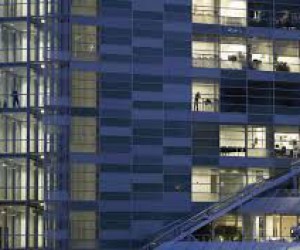A new study conducted by Investment Property Databank (IPD) and the Green Building Council of SA (GBCSA) has found that energy efficient (EE) commercial buildings in South Africa deliver better financial returns that non-EE buildings for their owners. This, together with South Africa’s challenging economic climate and the looming 2016 carbon tax system, makes the employment of an EE solution an important investment decision for property and business owners alike.
The study investigated 461 commercial buildings and found that the top quartile EE properties delivered a 15.9% total return, 170 basis points higher than the remainder of the buildings which delivered a total return of 14.2%. In addition, while the income returns generated by the two samples of properties were the same, the EE properties achieved a higher capital growth of 8.1%.
According to Dawie Kriel, Head of Engineering at Energy Partners, a leading energy solutions provider in South Africa, implementing a holistic EE plan is often simpler than expected and will essentially always yield immediate and sustainable returns on investment.
The energy saving potential is dependent on the financial return on investment that the owner would require, he says. “With a long-term investment view, a saving of 50% is quite achievable. There are also innovative financial support instruments available to make the initial investment into EE solutions easier. In most cases the initial interventions could have very little capital investment requirements; we have even seen savings of up to 15% from improved behaviour and corrective maintenance of existing systems. However, this is not guaranteed for any owner, and this is where the understanding of the energy use baseline is an invaluable tool.”
Kriel says that transforming an existing building for optimal energy use requires an in-depth understanding of the energy use profile and its components. “It is important for business and property owners to focus on the areas that have the greatest impact on energy use at the best return on investment. The first step is measuring the energy use (be it electricity or other sources) and creating a baseline of consumption for the whole as well as its subcomponents.”
The results can vary significantly depending on the occupants of the building and the energy requirements, but usually these subcomponents include lighting, climate control, and operational equipment such as IT and data processing, he says. “The information gathered by the measuring process must be evaluated by an experienced energy advisor to identify key saving opportunities.”
Kriel says that often the interventions could be as simple as reinstating existing systems to full functionality. “However, in some cases the building envelope must be altered to reduce energy intensity. The functionality of most systems deteriorates over time due to poor maintenance and aging components. As a result, a strategy must be designed to implement the changes to the building and monitor and maintain its continued efficiency from implementation onwards.
“The financial benefit of an effective EE plan is a direct saving on the bottom line that will just increase over time as the cost of energy inevitably increases. The longer owners wait to start the process of managing energy use, the larger the potential losses will become, which can be prevented with the introduction of targeted interventions. On top of this, the CO2 emissions negatively impact our environment and an opportunity is lost by the owners to position their buildings as a premium address in terms of responsible business,” concludes Kriel.










